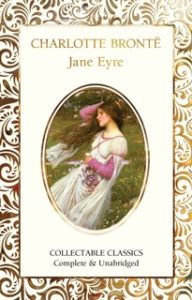A Journey of Seeking Independence
Jane Eyre and Freedom
By Ece Öğütcen and Ceren Yıldız

Charlotte Brontë’s Jane Eyre, published in 1847, is a Bildungsroman revolving around the protagonist Jane Eyre’s journey of becoming an independent woman from the stage of an orphan child. After living in lots of domestic places, such as Gateshead Hall and Lowood Institution, that she felt trapped in, Jane finally finds the independence that she has been seeking for since her childhood. Charlotte Brontë’s creation of Jane Eyre is a very successful representation of the idea of freedom. Especially as a woman of the Victorian Era, Jane Eyre is a character that rebels and fights for her ideals.
Initially, Jane is mentally and physically abused by her aunt her whole life: “Then Mrs. Reed subjoined—‘Take her away to the red-room, and lock her in there.’” (Jane Eyre, Brontë, Charlotte. Istanbul: Mk Publications. 1847/2019) Mrs. Reed, Jane’s aunt, commands her to be locked in a room because she defends herself after being abused verbally and physically by her cousin, John Reed. The author presents a world where, as a little child, Jane is punished for her actions whenever she defends or thinks for herself. Also, she is not allowed to say her mind and express her thoughts in this household. If she does express her thoughts, she is strictly punished by her aunt. Furthermore, throughout the book, Jane longs for freedom and independence. Because she has always lived in domestic places, she has always wanted to be free from those kind of oppressive environments. However, she ends up in Thornfield as a governess, where her freedom is restricted again by Mr. Rochester. Despite the emphasis on Jane’s individuality and free will in the book, Mr. Rochester manipulates her and tries to control her. In fact, he compares Jane with a bird, which is a representation of Mr. Rochester wanting Jane to be her own caged bird. Jane is a character that is longing for her independence, her liberty is so important for her as a character who is a very passionate and wild character; however, Mr. Rochester manipulates her into settling down and being in his control. These attempts do not work as Jane is able to leave her love behind and earn her freedom by running away from Thornfield.
Brontë portrays another important representation of freedom with the character of Bertha Mason. The novel leads its reader through the world of someone that is hold imprisoned without her will. Bertha Mason’s liberty is taken away from her without a sensible reason and this leads to Bertha’s losing her mind. The novel takes a different turn to examine the idea of freedom by exploring an individual being held hostage for years and the consequences this action brings with it. The reader witnesses Bertha getting out of a human state of mind as she is treated like a caged animal for years. All in all, the novel Jane Eyre suggests an investigation of the idea of freedom, criticizing the corrupted society of the Victorian Era in terms of liberty of individuals with examples of Jane’s experiences; such as the oppressive treatment she faces in her aunt’s home, and Mr. Rochester’s attitude towards her and Bertha Mason.
